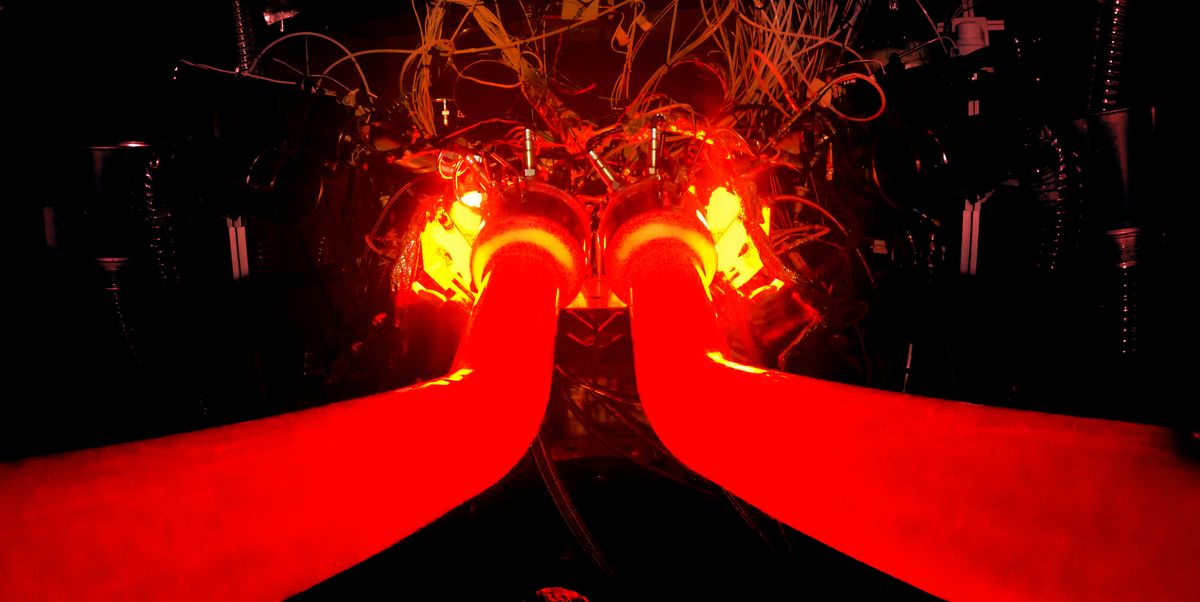
With more and more new electric cars on the horizon, the future of internal combustion engines seems darker every day. But this new type of hyper-efficient engine design might keep it around for a bit longer.
Road & Track contributor Jason Fenske breaks down the new design, published by the Society of Automotive Engineers, in a new video for his YouTube channel, Engineering Explained. Though it uses pistons and fuel, the design unlike any other traditional combustion engine on the road today.
Unlike a normal combustion engine, which uses the same chamber to compress, mix, and combust an air-fuel mixture, entry ignition splits the work between three different chambers. The first, equipped with a piston, compresses the air to build pressure and heat. It then sends the compressed air into a reservoir, which feeds into another space that mixes the compressed air with the fuel. That hot air-fuel mixture is then forced sucked into another chamber using a slider valve, where, because of the heat inside the cylinder, it ignites (without the use of a spark plug). That's where the name entry ignition comes from.
It's a lot to digest, we know. Fenske explains it in more detail in the video above. Since the design completes the intake and combustion strokes at the same time (in different cylinders, remember), it's technically a two-stroke engine. The method allows for a higher compression ratio and a leaner air-fuel ratio, allowing for a theoretical thermal efficiency of 63 percent—14 percent better than your average traditional internal combustion engine.
Of course, it's not like we're going to be seeing entry ignition engines popping up in road cars any time soon. The method is unproven, and carries a bunch of unknowns regarding cooling, balancing, and reliability. Still, it's a sign not all is lost in the world of fuel-powered engines.
This content is created and maintained by a third party, and imported onto this page to help users provide their email addresses. You may be able to find more information about this and similar content at piano.io
This commenting section is created and maintained by a third party, and imported onto this page. You may be able to find more information on their web site.
from Hacker News https://ift.tt/3c4AB1g
No comments:
Post a Comment
Note: Only a member of this blog may post a comment.